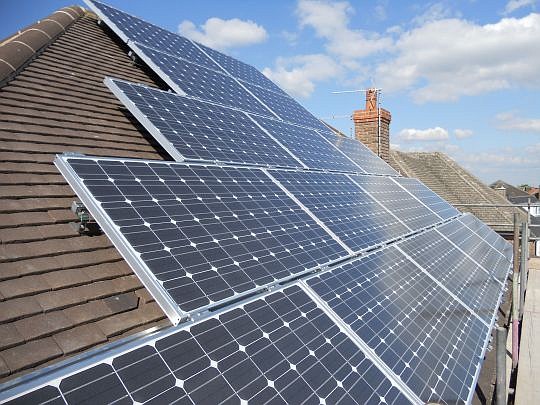
The value of electricity produced by rooftop photovoltaic panels versus the value of electricity generated and distributed by JEA is at the heart of a controversy being played out by the solar industry and the utility.
Both the industry that sells and installs home solar systems and JEA agree that solar-generated electricity will be a major element of reducing carbon emissions from producing electricity.
Both sides agree the cost to install the systems, whether on a roof or in a utility-level solar farm — such as the 100-acre facility near Baldwin from which JEA purchases electricity — is 70 percent lower than in 2009.
Both sides also agree the 501 customers with solar systems and net-rate meters account for only 0.1 percent of JEA’s more than 425,000 residential electric customers
The issue is net metering, which allows residential solar panel owners to transfer electricity they don’t need in their homes to JEA in exchange for a credit that lowers their bill for the electricity they purchase.
Since 2009, when JEA began its net-metering program, solar panel owners receive a monthly credit per unit of electricity equal to JEA’s retail price to deliver the same amount of electricity — 11 cents per kilowatt-hour.
In the fiscal year that ended Sept. 30, JEA credited net-meter customers for 990,000 kilowatt hours of electricity, equal to the amount used during the year by about 80 average residential customers.
An amendment to the solar policy being considered by the utility’s board of directors would reduce the credit per kilowatt hour to 7.5 cents, which is the market rate for solar electricity purchased by JEA, said Chief Financial Officer Melissa Dykes.
According to Peter Wilking, president of A1A Solar Contracting Inc., solar electricity generated by residential systems is worth more than JEA’s retail price.
That’s because JEA doesn’t have to provide additional transmission lines to distribute the electricity that goes back to the grid from net meters.
Residential solar allows JEA to reduce the amount of fossil fuel the utility needs to generate the electricity its customers need and also reduces the amount of carbon emissions from power generation, he said.
“The electricity put back into the grid is worth two to three cents more than retail,” Wilking said.
Fossil fuel, including coal products and natural gas, are used to generate most of the electricity JEA sells to its customers at a fuel cost of about 3 cents per kilowatt hour, said Dykes.
The 8-cent difference to get to the 11-cent retail price covers JEA’s cost to maintain and operate the grid, capital improvements and debt service.
Those are costs that owners of residential solar systems don’t have to cover when they transfer their excess electricity to JEA, Dykes said.
In addition, when a customer enrolls in the net-meter program, JEA installs at no additional cost a back-feed electric meter that allows transfer of electricity into the grid. The two-way meters cost $440, about double that of a standard meter.
Dykes said JEA has a responsibility to provide reliable electric service to its customers at the lowest possible price, so paying a few customers more than the market rate for solar power increases, however minimally, the cost for all of the not-for-profit utility’s customers.
“We have to be fair to the 99.9 percent of our customers who don’t have solar,” she said.
Since Wilking founded his company in 2010, he has completed more than 500 installations in North Florida and South Georgia. A1A’s systems represent about 90 percent of the residential solar systems in JEA’s service area, he said.
Wilking is concerned if JEA reduces the credit per kilowatt hour, it will make investing in solar panels less attractive to his potential customers.
He calculates the average impact to a residential solar owner of about $20 per month in lost credit if JEA amends its policy.
Dykes said the utility calculates the reduction in credit at about $15 per month for a median-size 6.4-kilowatt home system.
Wilking said return on investment is a benefit used in marketing residential solar systems and a reduction in the credit likely would have a negative effect on his business.
“It would make it more difficult to sell solar,” he said.
JEA’s board has scheduled a solar policy workshop on April 7. The decision whether to amend the solar policy is scheduled to be made by the JEA board at its April 19 meeting.
@DRMaxDowntown
(904) 356-2466